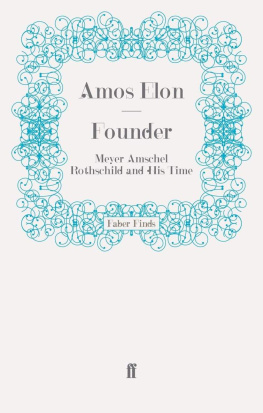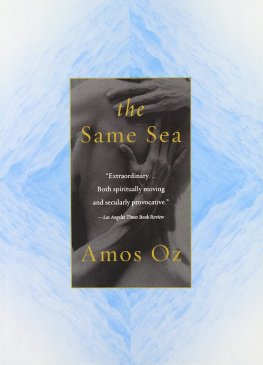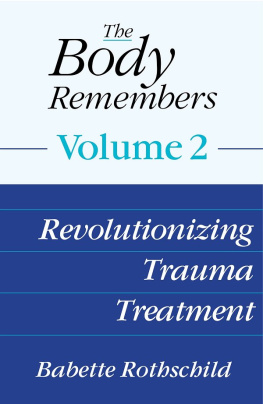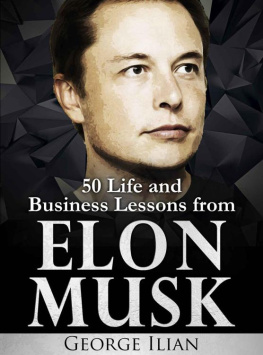Amos Elon - Founder: Meyer Amschel Rothschild and His Time
Here you can read online Amos Elon - Founder: Meyer Amschel Rothschild and His Time full text of the book (entire story) in english for free. Download pdf and epub, get meaning, cover and reviews about this ebook. year: 2011, publisher: Faber & Faber, genre: Non-fiction. Description of the work, (preface) as well as reviews are available. Best literature library LitArk.com created for fans of good reading and offers a wide selection of genres:
Romance novel
Science fiction
Adventure
Detective
Science
History
Home and family
Prose
Art
Politics
Computer
Non-fiction
Religion
Business
Children
Humor
Choose a favorite category and find really read worthwhile books. Enjoy immersion in the world of imagination, feel the emotions of the characters or learn something new for yourself, make an fascinating discovery.
- Book:Founder: Meyer Amschel Rothschild and His Time
- Author:
- Publisher:Faber & Faber
- Genre:
- Year:2011
- Rating:4 / 5
- Favourites:Add to favourites
- Your mark:
- 80
- 1
- 2
- 3
- 4
- 5
Founder: Meyer Amschel Rothschild and His Time: summary, description and annotation
We offer to read an annotation, description, summary or preface (depends on what the author of the book "Founder: Meyer Amschel Rothschild and His Time" wrote himself). If you haven't found the necessary information about the book — write in the comments, we will try to find it.
Amos Elon: author's other books
Who wrote Founder: Meyer Amschel Rothschild and His Time? Find out the surname, the name of the author of the book and a list of all author's works by series.
Founder: Meyer Amschel Rothschild and His Time — read online for free the complete book (whole text) full work
Below is the text of the book, divided by pages. System saving the place of the last page read, allows you to conveniently read the book "Founder: Meyer Amschel Rothschild and His Time" online for free, without having to search again every time where you left off. Put a bookmark, and you can go to the page where you finished reading at any time.
Font size:
Interval:
Bookmark:

Plan of Frankfurt, 1628.

Meyer Amschel
Rothschild and His Time
AMOS ELON

Riches cover a multitude of woes
Menander, The Boaetian Girl
This is not an authorized or official biography. Nevertheless, in researching and writing this book I have had such a great degree of encouragement and support from several members of the Rothschild family in England and France, and from the staff of the Rothschild Archive in London, that it is difficult for me to make adequate acknowledgements of all of them. Mr Victor Gray and Ms Melanie Aspey of the Rothschild Archive spared no energy to make available the remaining material on Meyer Amschel Rothschild and his sons, as did Mr Georg Heuberger, Mr Fritz Backhaus and Ms Helga Krohn at the Frankfurt Jewish Museum. Mr Arthur Fried of Jerusalem gave generously of his time to clarify to the layman a few of the more arcane corners of international finance. The private archive of the Vienna branch of the Rothschild family that was confiscated by the Nazis in 1938 was transported in 1945 to Moscow where it is now available, though not without some difficulties, at the Ozoby Arkhiv. I am indebted to the staff of this archive as well as to that of the Archives Nationales in Paris, the Bavarian and Marburg State and the Frankfurt City Archives, which I was able to consult. Thanks are also due to the Frankfurt Jewish Museum and the Historical Museum of Frankfurt for permission to reproduce the contemporary illustrations that appear in this volume. I am also indebted to my English editor Stuart Proffitt, who laboured over this text, and to Toby Mundy, whose meticulous attention to detail proved invaluable in preparing the manuscript for the printer.

In 1814, 1 was equivalent to 10 gulden, 20 francs or 5 thaler. Consumer prices have risen by approximately 4,500 per cent between 1790 and the time of writing. Thus 1 in 1790 is roughly equivalent to 45 today (1996).
Consumer prices have risen by approximately 4,500 per cent between 1790 and the time of writing. Thus 1 in 1790 is roughly equivalent to 45 today (1996) (p. 17): Economist , 22 February 1992, p. 88.
CHAPTER ONE

O NLY A FEW CRUMBLING bricks are left today of the Juden-gasse , a dark, foul-smelling alley in Frankfurt-on-Main where, in the second half of the eighteenth century, a disenfranchised Jew named Meyer Amschel Rothschild founded a European banking dynasty of which it was later said that its history was more important than that of many a royal house.
Rothschild was a man of seemingly inexhaustible energy and ingenuity. His life reflects, as in an old, half-blind mirror, the possibilities as well as the inequities rampant in the Age of Absolutism. He raised five famously gifted sons, veritable money-making machines, to carry on his work after him. Their names overshadowed his own and became synonymous with colossal wealth, extravagant living and hidden political power. A century after his death, the liberal polemicist A. J. Hobson would still ask, in all seriousness, if a great war was still possible in Europe if the House of Rothschild set their face against it. The exaggeration implied in this rhetorical question reflects the odd, and sometimes the lethal way in which the reality of the Rothschilds was subsumed and devoured by the myth.
Until very recently, historians tended to refrain from writing the lives of the underprivileged, especially when they were not politically active or engaged in one of the arts. Such modest men and women were usually dealt with anonymously or quantitatively. Rothschilds origins were certainly modest. There was little reason to foresee his destiny. The personal circumstances of his life were difficult throughout. They suggest a saga not only political and financial but also human and dramatic more dramatic, perhaps, than that of his flamboyant sons. The sons were not persecuted human beings, legally confined to the squalor of a congested ghetto but, for most of their lives, noblemen, free citizens, living in fairy-tale palaces and socializing with the great of Europe.
The old Judengasse where Rothschild lived his entire life was a narrow lane, more slum-like and overcrowded than any other tenements in Frankfurt. A closed compound, it was shut off from the rest of the city by high walls and three heavy gates. The gates were guarded by soldiers and were locked at night, all day on Sundays and Christian holidays and from Good Friday until after Easter. In it lived the largest Jewish community in Germany in conditions of almost total isolation, or apartheid.
The Judengasse was some ten or twelve feet wide. It ran in a half-circle from the Bornheimer gate in the north to the Jewish cemetery in the south where the oldest tombstones testified to a Jewish presence in the city as far back as the twelfth century. The home of the Rothschild family was a dilapidated tenement, at the back of No 188 Judengasse. Here Meyer Amschel Rothschild was born on 23 February 1744. In 1786, when he had achieved some success, he moved with his wife and children to a larger home at No 148, on the east side of the curving Judengasse, a few doors down from the main synagogue. This was a four story frame-house of brick, wood and slate and, though it was said to be one of the largest in the ghetto, it was so narrow that in the small dark rooms the beds could be placed only along side-walls, at right angles to the street. This house still stood until 18 May 1944, when it was razed along with much else in central Frankfurt during an American air-raid.
No trace is left of the house today, nor of the Judengasse itself (except for a few foundation stones), nor of the ancient synagogue, with its high Gothic windows and raised central nave surrounded by carved pews on its four sides, which Rothschild visited almost every day. Frankfurt was badly damaged during the war and was afterwards rebuilt from its ruins and modernized, more radically perhaps, than other German cities. A few well-known buildings in the old city center were reconstructed to appear (on the outside) more or less as they did before, in brand-new Gothic or Baroque. They have since acquired a patina of their own and look almost genuinely old. The most prominent sites were faithfully rebuilt from the ground up the main churches, the fine burghers mansion where Goethe was born, five years after Rothschild and a few characteristic old inns. The old town hall was also restored as was the great cathedral, where, until after 1792, the Holy Roman Emperors of the German Nation were crowned. The rest of the city is almost entirely modern. The old street plan was discarded. Where the old Judengasse ran in a wide curve round the old Dominican convent, with its fine altar by Drer and Holbein, there is now nothing left but a wide expanse of asphalt parking lots and wide avenues choked with traffic and tall office buildings. The Dominican convent was also rebuilt. And by one of those coincidences which, in Germany, are so often pregnant with heavy irony the remains of the old Judengasse are now buried under the sleek offices of the local gas works.
Font size:
Interval:
Bookmark:
Similar books «Founder: Meyer Amschel Rothschild and His Time»
Look at similar books to Founder: Meyer Amschel Rothschild and His Time. We have selected literature similar in name and meaning in the hope of providing readers with more options to find new, interesting, not yet read works.
Discussion, reviews of the book Founder: Meyer Amschel Rothschild and His Time and just readers' own opinions. Leave your comments, write what you think about the work, its meaning or the main characters. Specify what exactly you liked and what you didn't like, and why you think so.









